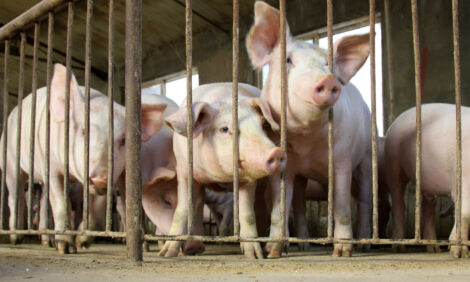



CME: Livestock Slaughter Shows Decline
US - Livestock slaughter data for September showed a dramatic decline in beef production as well as a lower monthly pork output, reports Steve Meyer and Len Steiner.Total beef production for the month was
reported to be 2.016 billion pounds, 9% lower than a year ago.
While the decline appears quite significant, it is important to
keep in mind that in September 2012 there were just 19
slaughter days, compared to 21 days a year ago. The mismatch
in production days is an issue that comes up frequently
when doing monthly comparisons and one that analysts often adjust
for in order to assess supply trends.
Data shows that total beef/pork production divided by
the number of slaughter days. Using this metric, beef production
in September averaged about 106.1 million pounds per
slaughter day, 0.6% more than a year ago. It’s quite a reversal
from the precipitous decline indicated in the raw monthly numbers.
The point we are trying to make is even more obvious when looking
at the monthly statistics for pork. Total pork production in September
was reported to be 1.911 billion pounds, 2.2% lower than
the previous year. The decline would come as a surprise to all
those looking at record weekly slaughter and production numbers
last month. When adjusting for the difference in slaughter days,
we calculate that pork production in September averaged
100.6 million pounds per day, 8.1% higher than the same period
a year ago. This was also the largest amount of average daily
pork production ever recorded.
Daily beef production was higher than a year ago despite
fewer cattle coming to market. Total cattle slaughter in September
was 2.543 million head, 12% smaller than a year ago. When adjusting
for the marketing days, daily slaughter was down 2.3% from
last year.
The big difference so far this year continues to be the
increase in cattle carcass weights. In part this is due to the fact
that there are more steers in the slaughter this mix than a year
ago. Consider that a dressed steer carcass averaged about 871
pounds in September, compared to 599 pounds for a cow carcass.
In September 2012, steers made up 49% of overall slaughter compared
to 47% last year. Steer weights also are sharply higher and
they have established all time record highs for the past three
months. At 871 pounds, dressed steer weights are the heaviest
ever recorded.
The heavier weights are one way for producers to
keep up production levels as calf numbers steadily decline. Some
also argue that feedlots have become less current as retailers and foodservice operators struggle to pass along the higher beef costs
to consumers.
Others have pointed out repeatedly that more
effective feed additives have dramatically improved weight gains
and efficiencies for cattle in some areas. Regardless of the reasons,
and it is likely a combination of the above, the rise in cattle
carcass weights was big enough to offset the reduction in cattle
numbers in September.
Hog weights, on the other hand, were
reported to be about the same as a year ago as producers accelerated
marketings and limited feeding times.







